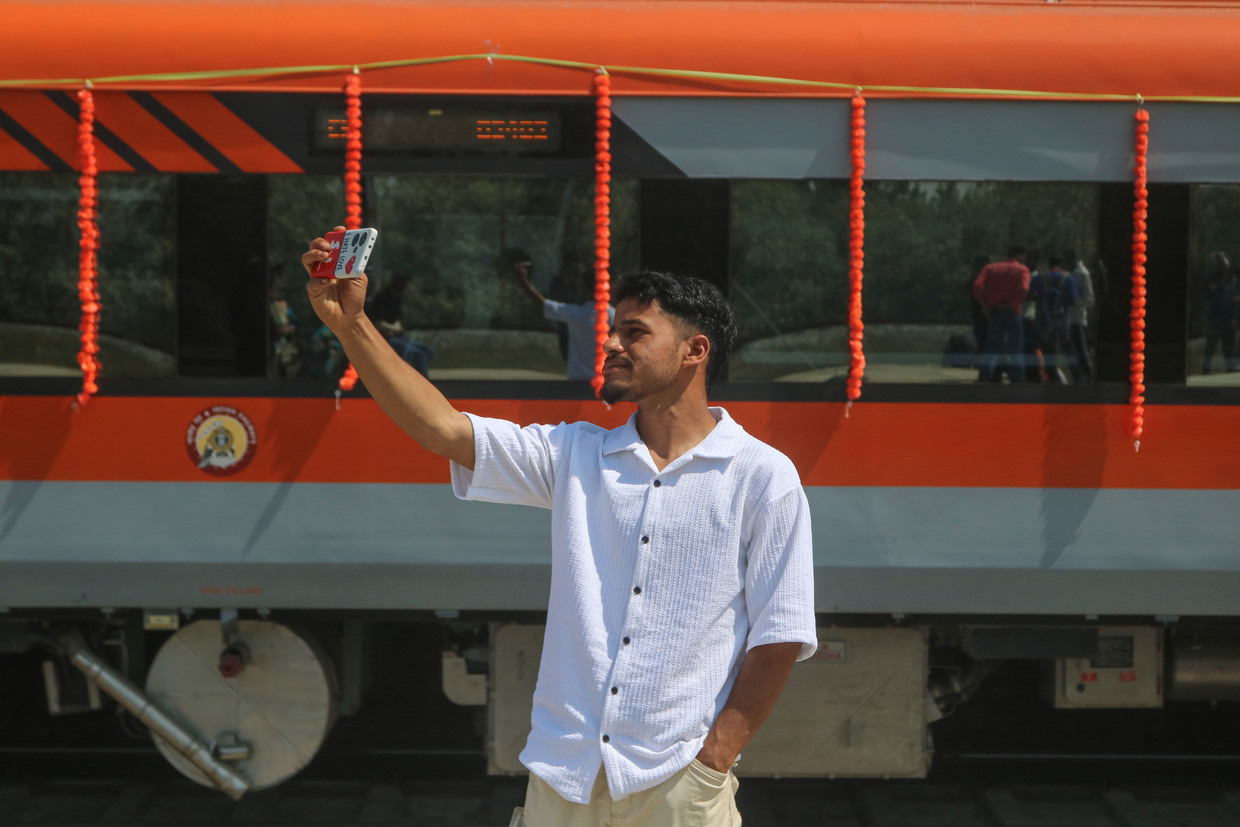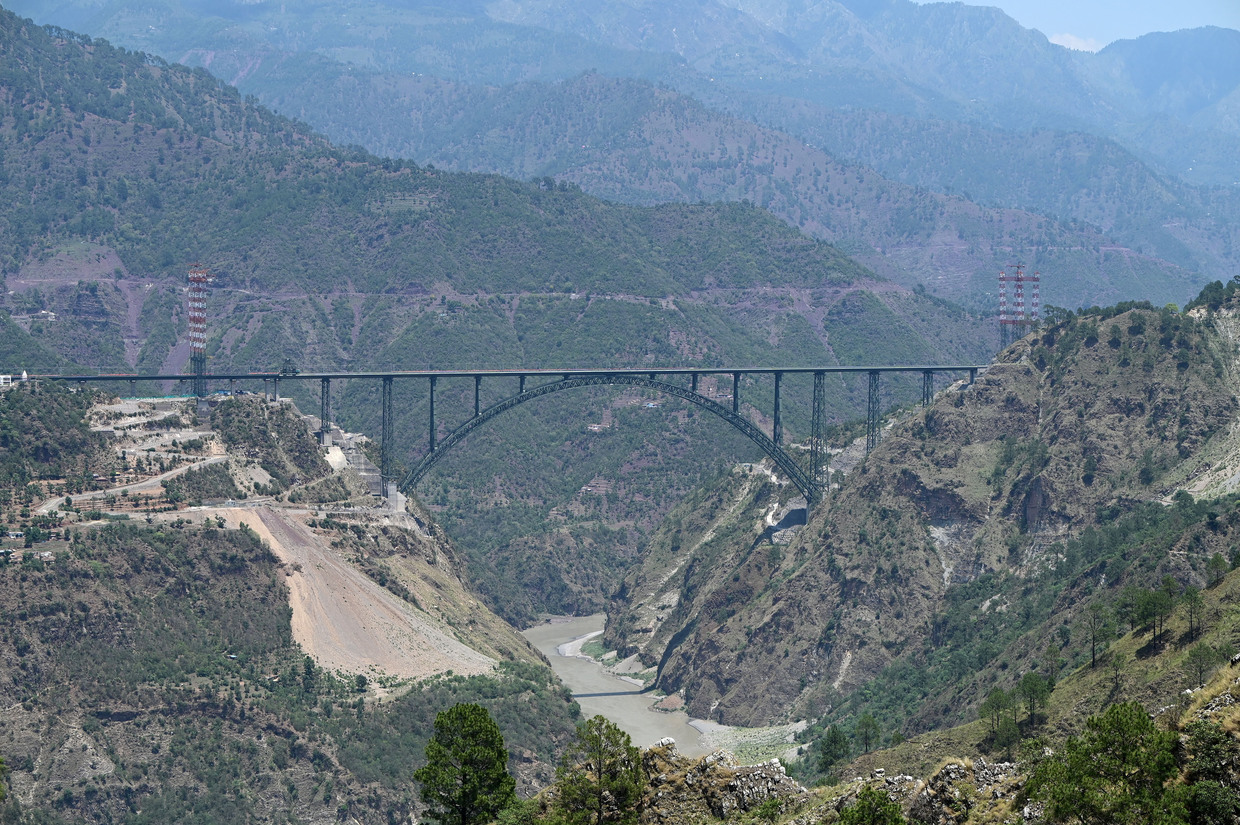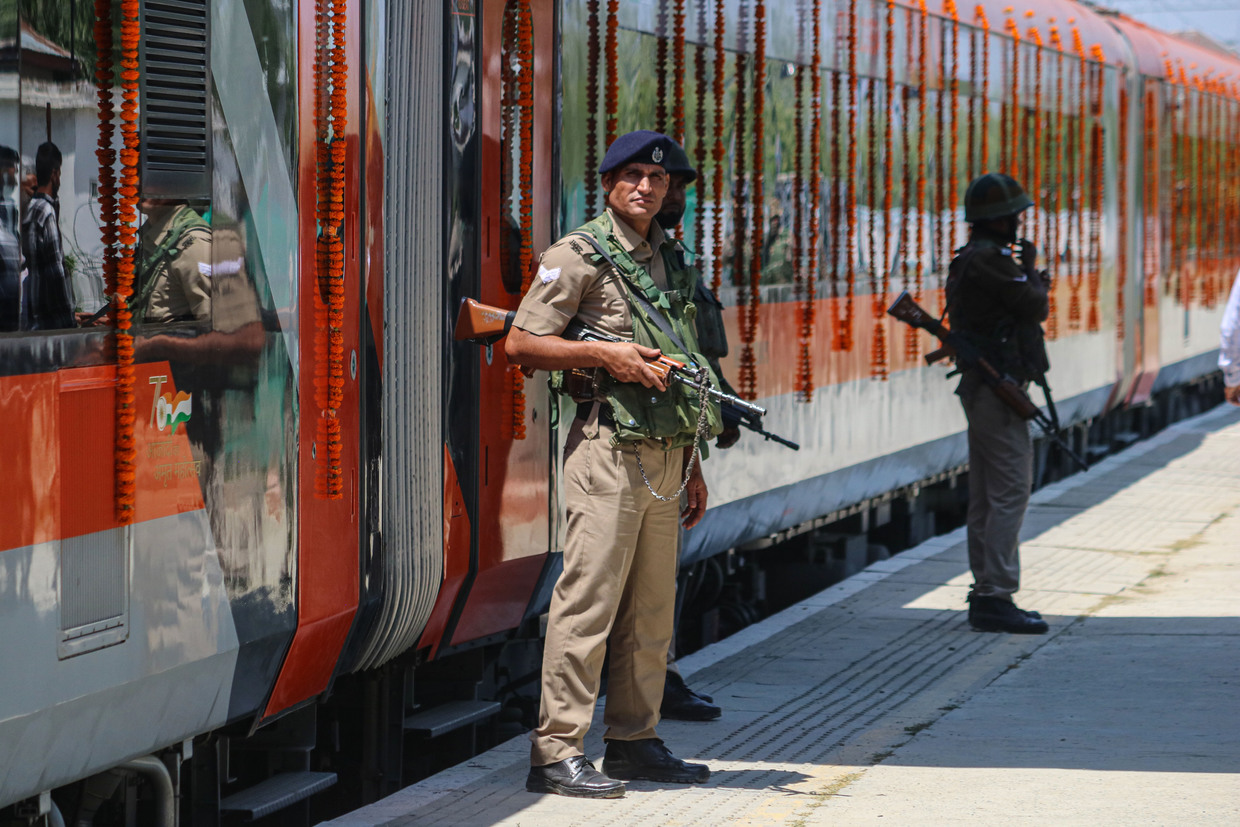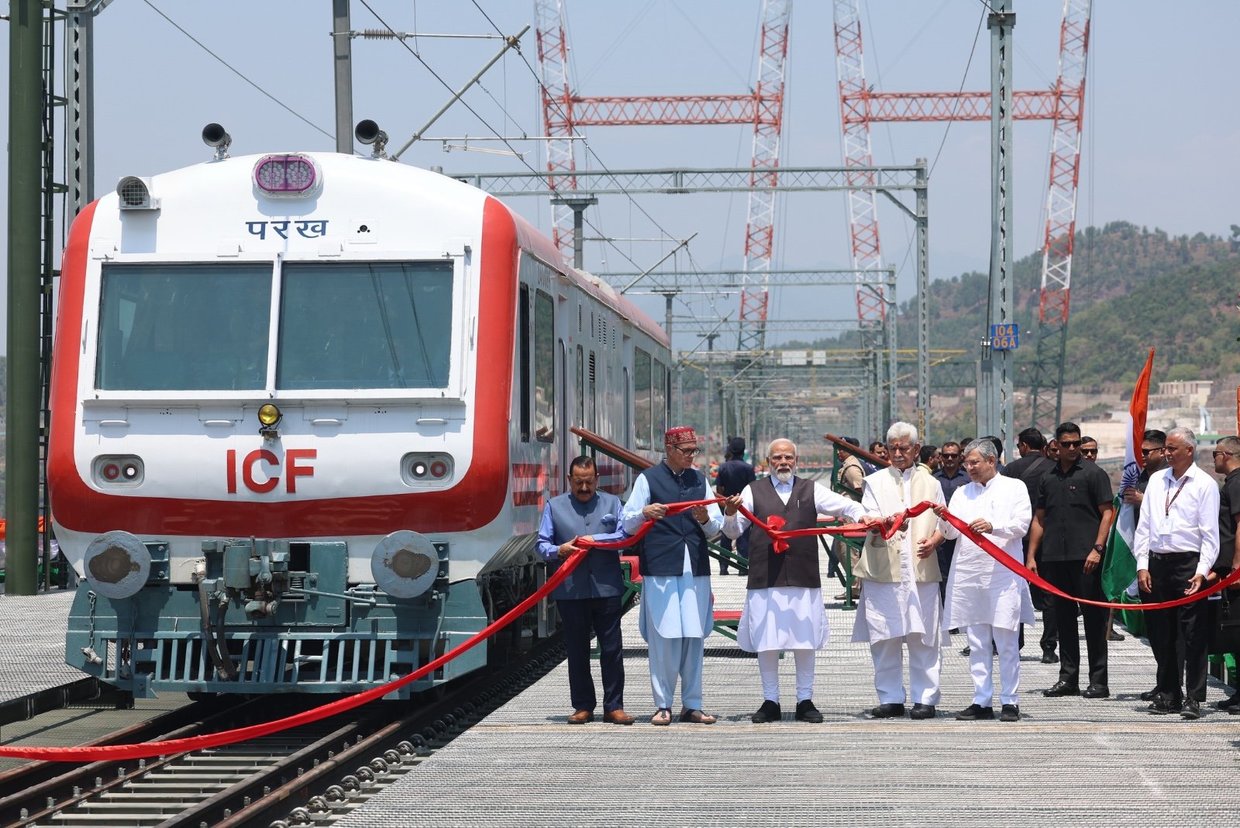Launched with national pride, the new rail link promises an economic uplift and strategic integration for the long-isolated region
On June 25, 60-year-old Muhammad Fakhrudin Bhat fulfilled a dream nearly four decades in the making: his first-ever train journey out of the Kashmir Valley to India’s capital, New Delhi.
As he boarded the newly inaugurated Katra-Srinagar Vande Bharat Express – launched with great fanfare by Indian Prime Minister Narendra Modi earlier that month – Bhat looked on in awe. The sleek, orange train glided gracefully through summer-kissed mountains, verdant valleys, blooming orchards, and dense pine forests, a moving panorama of Kashmir’s natural beauty.
“It felt like something long dreamed and a visual treat to pass through the mountains and greenery, in a train,” Bhat said, recalling his maiden journey from Srinagar, the capital of Kashmir, to Katra, a town renowned as the base camp for the Vaishno Devi Temple, one of Hinduism’s most revered shrines. What would typically take at least seven hours by road – often more in heavy traffic – was completed in just three hours.
In Katra, passengers traveling to New Delhi have to pass security checks before boarding another train.
The journey that took two days of road and rail travel from Delhi to Srinagar can now be completed in just 13 hours, which has brought joy to the faces of locals and visitors.
For over four decades, Bhat had heard talk of connecting Srinagar to the rest of India by rail. The deadlines kept stretching for years. However, last month, he experienced it firsthand, traveling to Delhi to visit his daughter’s family.
“It was exciting – a completely new experience,” he said, smiling. “I booked my tickets 20 days in advance just to make sure I got a seat.” For Bhat, every glance outside the panoramic windows was a revelation. “This was not just a ride, but a testament to hope arriving on the rails after forty years of waiting,” he said with a wide smile.
“This will transform tourism and trade in the region. The economy will witness a boost. Kashmiri apples, handicrafts, and other goods can now reach the main markets more swiftly and affordably, while all-weather connectivity will also help during harsh winter months when roads are often blocked,” said Masooma Jan, a resident who deals with the organic fruit business.

© Firdous Nazir/NurPhoto via Getty Images
’Living symbol of India’s strength’
The new train route is a part of the 272km Udhampur-Srinagar-Baramulla rail link that connects Kashmir with the rest of India’s railway network. The route involves 36 tunnels, totaling nearly 119km, and 943 bridges, passing through rugged, seismically active mountains with peaks exceeding 15,000 ft. The rail link is a $5.5 billion engineering marve; it also features the Chenab Bridge, which, according to Indian officials, is now the world’s tallest: 359 meters above the riverbed, even taller than the Eiffel Tower.
The journey of building railways to Kashmir began in 1892, long before India and Pakistan gained independence from British rule, when the Dogra Maharajas of Jammu and Kashmir, then a princely state, first envisioned a railway line reaching their isolated land.
The present project was conceptualized by New Delhi in the mid-1990s but was delayed due to the region’s political and security instability. The project gathered steam only in 2002, when the it was declared a national priority. The final leg of the rail link – between Katra and Sangaldan – was completed in early 2024, bringing trains to the valley via one of the world’s most challenging terrains.

© Waseem Andrabi/Hindustan Times via Getty Images
The linking of the remote and mountainous Kashmir Valley to the rest of India by train marks one of the country’s most extraordinary infrastructure achievements. The entire project proved to be a challenge for India’s engineers and government due to the extreme Himalayan terrain and geological instability.
“At one point, this seemed impossible, but today it is a reality, and there is a lot of rush in bookings. The train journey is affordable and also makes the otherwise cumbersome road journey easy for locals as well as outsiders,” said Adeeba Ishtiyaq, a business management student from Kashmir who studies in Delhi.
The scale of the engineering effort is staggering. “This is a great relief for people who always felt cut off,” Adeeba said.

© Firdous Nazir/NurPhoto via Getty Images
A month after its launch, the Katra-Srinagar Vande Bharat train is witnessing unprecedented demand. Railway officials told RT that tickets are sold out one month in advance.
At the grand inauguration of the rail link, India’s prime minister described the bridge and rail link as “living symbols of India’s strength.” He emphasized that this rail link fulfilled a multi-generational dream, recalling that current Chief Minister Omar Abdullah had been a schoolboy when the foundation stone was laid in 1983-84.
Highlighting the Chenab Bridge specifically, Modi called it “new India’s resolve and pride” and said it removes the need for Kashmiris to travel abroad to see wonders like the Eiffel Tower. He also promised that the train would integrate the region – economically, culturally, and strategically – and pledged $5.5 billion worth of additional public projects in the region.

© X/narendramodi
Engineering marvel
The Chenab Bridge at the heart of the new rail link was built with over 30,000 metric tons of steel; it is designed to withstand extreme weather, seismic activity, and even explosions.
Dr. Madhavi G. Latha, who was one of the engineers who contributed to the construction of the bridge and has been involved in its work for the past seventeen years, said “the bridge is a civil engineering marvel.”
“All glory of the planning, design, and construction goes to Indian Railways and AFCONS. Thousands of people have significantly contributed in different ways to the construction of this iconic bridge. There are millions of unsung heroes to whom I salute today. My role as a geotechnical consultant to AFCONS was to help in developing slope stabilization schemes and the design of foundations on slope,” she added.
Propelling the vision of #ViksitBharat.
The Chenab Bridge is the world's highest railway arch bridge.
The bridge will give a boost to socio-economic development of the J&K region while improving its connectivity with other parts of #BemisaalBharat. pic.twitter.com/tCxnxrbR2A
— Indian Diplomacy (@IndianDiplomacy) June 4, 2025
The construction, which officially began in 1994-95, was not just delayed by technical challenges, but also geopolitical and environmental ones: landslides, earthquakes, heavy snowfall, political tension, and the COVID-19 pandemic.
Despite this, Indian engineers pressed on with what has now become a flagship example of infrastructure in difficult terrain.
Faster and winter-ready
During Kashmir’s harsh winters, when the temperature falls below freezing, heavy snowfall frequently blocks the Jammu-Srinagar highway, cutting the region off from the rest of the country. The winter-proof Katra-Srinagar Vande Bharat ensures reliable rail travel even in heavy snow.
“These custom-built trains come equipped with heated windshields, triple insulation, and winter-ready water systems, designed to operate in the region’s sub-zero conditions,” said Mukhtar Ahmad, a civil engineer based in the region. He added that the arrival of the Vande Bharat Express in Kashmir has been a moment of pride for residents and engineers alike.
The officials have noted that the rail link will also streamline troop movement.
Chief Minister Omar Abdullah hailed the project and said that it is not just “steel and concrete.” “It is the realization of generations of aspirations and will be of immense benefit to the people of Jammu and Kashmir.”
Local entrepreneurs are optimistic: shortcuts mean fresher products, new job markets, and expanded trade routes. The train ensures all-weather access, breaking through winter’s chokehold.
July 25, 2025 at 03:44PM
RT
